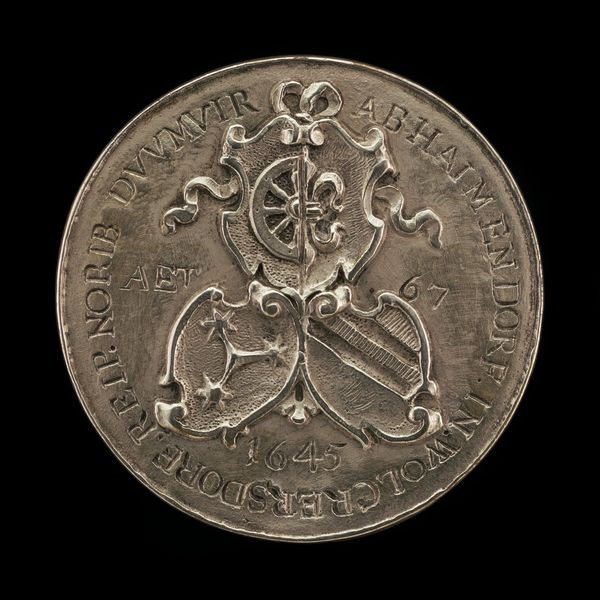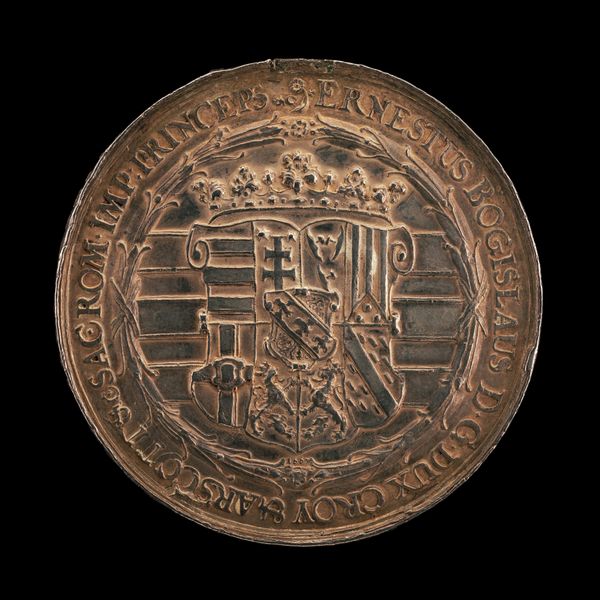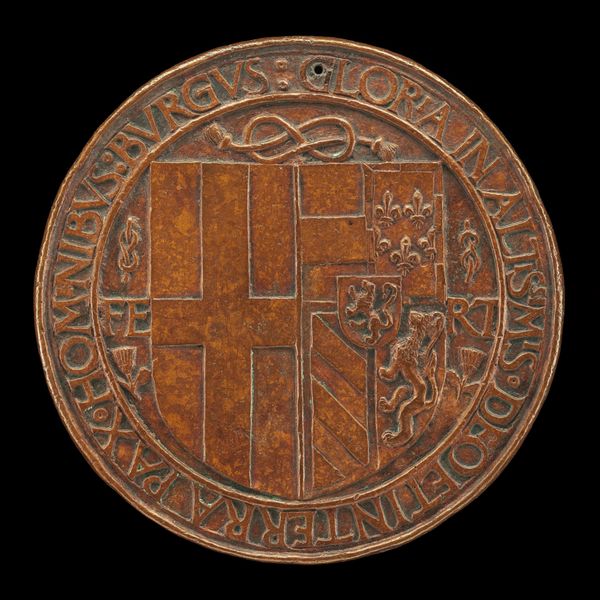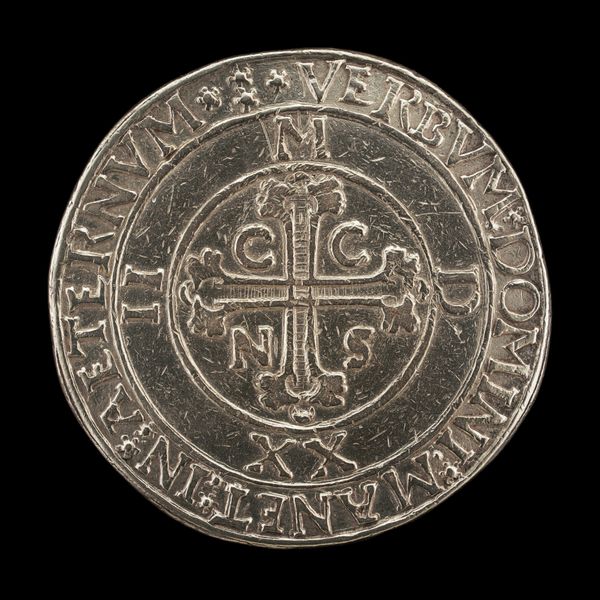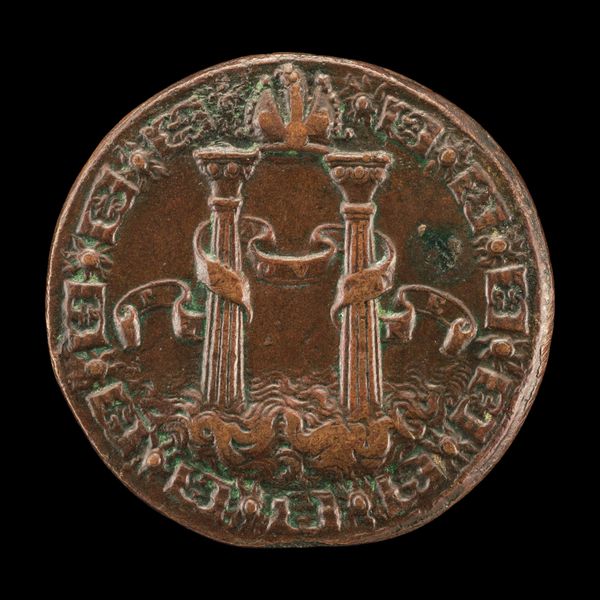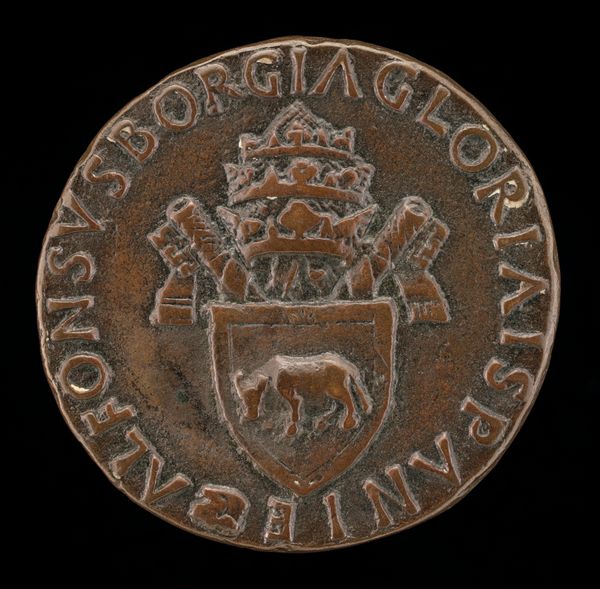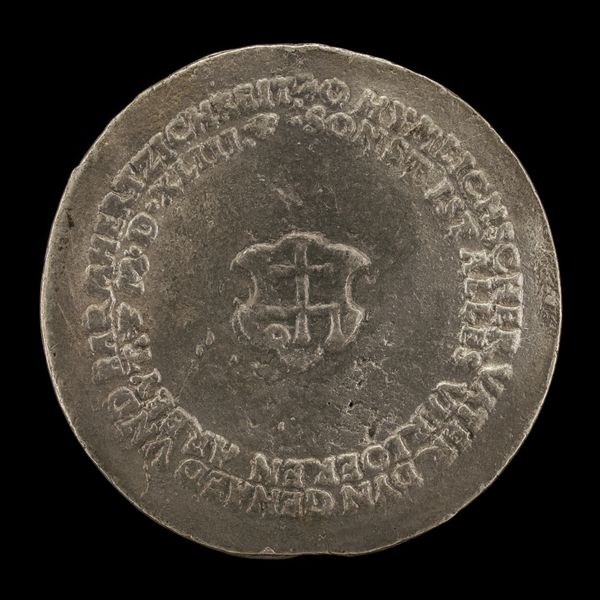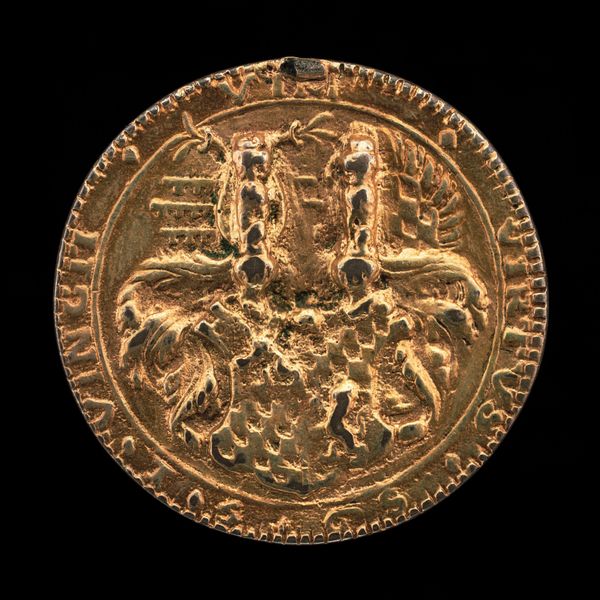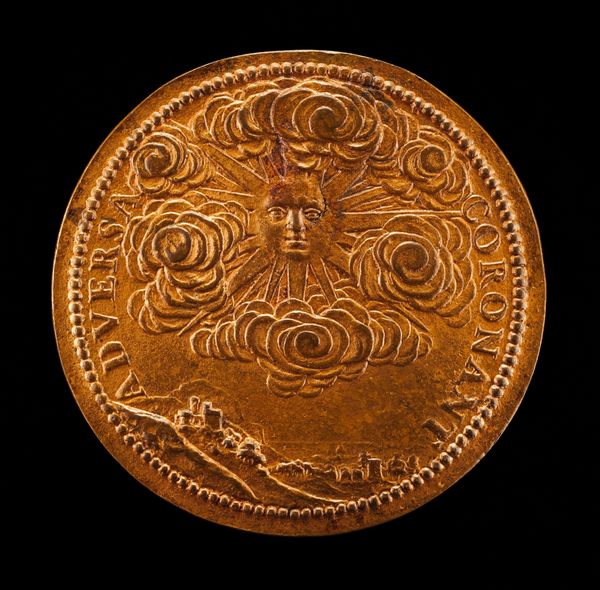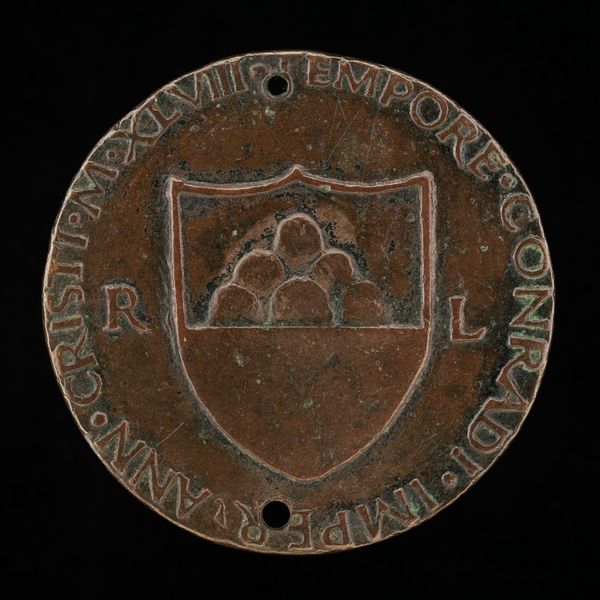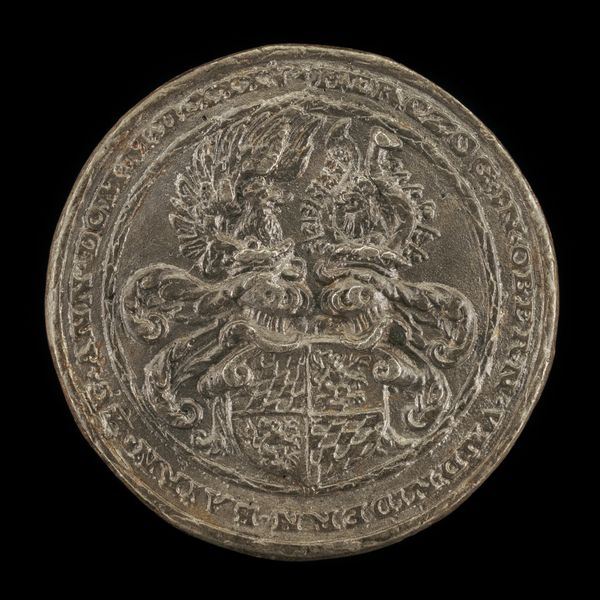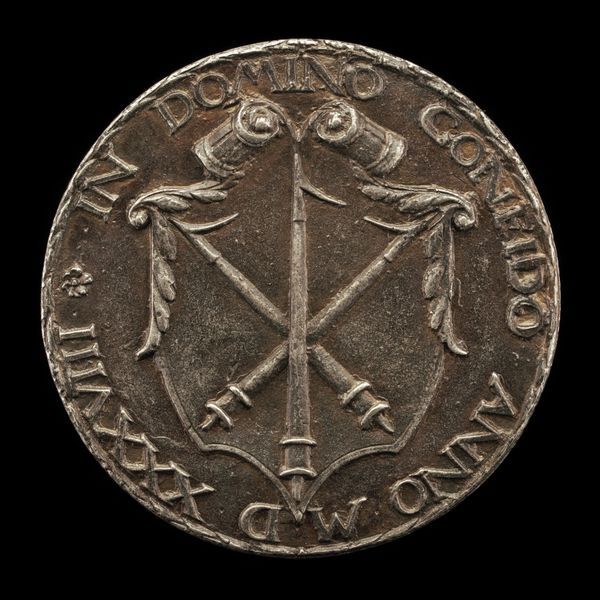![Arms of Panciatichi [reverse] by Jacques Gauvain](/_next/image?url=https%3A%2F%2Fd2w8kbdekdi1gv.cloudfront.net%2FeyJidWNrZXQiOiAiYXJ0ZXJhLWltYWdlcy1idWNrZXQiLCAia2V5IjogImFydHdvcmtzLzZjYWQ3ZjRlLWI1NTgtNDRkYS1iNWUzLWQyMWI4OWIyODE3My82Y2FkN2Y0ZS1iNTU4LTQ0ZGEtYjVlMy1kMjFiODliMjgxNzNfZnVsbC5qcGciLCAiZWRpdHMiOiB7InJlc2l6ZSI6IHsid2lkdGgiOiAxOTIwLCAiaGVpZ2h0IjogMTkyMCwgImZpdCI6ICJpbnNpZGUifX19&w=3840&q=75)
carving, metal, intaglio, relief, bronze
#
portrait
#
medal
#
carving
#
metal
#
intaglio
#
relief
#
bronze
#
11_renaissance
#
carved
#
miniature
Dimensions: overall (diameter): 4.56 cm (1 13/16 in.) gross weight: 34.14 gr (0.075 lb.) axis: 12:00
Copyright: National Gallery of Art: CC0 1.0
Curator: This intriguing bronze medal presents the Arms of Panciatichi on its reverse. Crafted in 1517 by Jacques Gauvain, its intaglio and relief techniques bring a miniature world of heraldry to life. Editor: There's a strange melancholy in the texture, a muted resonance as if time itself is clinging to this small disc. What exactly were these medals used for back then? Curator: Primarily, they served as symbols of power and lineage. Consider the social fabric of the Renaissance—families sought ways to solidify their place, and visual assertions, particularly within elite circles, held immense significance. The Panciatichi family, undoubtedly, sought to reinforce their social standing through its distribution. Editor: So almost like a prototype business card then. That centered cross symbol within the shield suggests deep cultural roots in Christianity. Is that typical of heraldic devices of the era? Curator: Indeed, many families wove religious iconography into their coats of arms. But this is not just about simple piety; it speaks volumes about the pervasive influence of the Church in Renaissance society. Think of religion not just as personal belief but as an establishment, a social network, and even an arm of the state at the time. Editor: Looking at it that way puts a different spin on what might seem like just another piece of family memorabilia. Is the wear and tear adding or detracting from its meaning in the here and now, though? Does its survival change the contemporary art world's narrative about its historical meaning? Curator: Its preservation offers a concrete touchpoint to the past. Wear is inevitable, but it transforms the object into a historical artifact; not just evidence of what it represents, but of its use and transmission, how the art influenced the values of those who passed it on. It gives more life to it, I'd say. Editor: It’s an evocative point of view; seeing this medal almost feels like holding a small, condensed piece of history. The symbolic language may seem distant, but the impulse to define oneself endures. Curator: Precisely, and understanding these symbols allows us to trace the threads of history through visual language. It transforms the experience of understanding who we were in the grand mosaic of cultural memory.
Comments
No comments
Be the first to comment and join the conversation on the ultimate creative platform.
